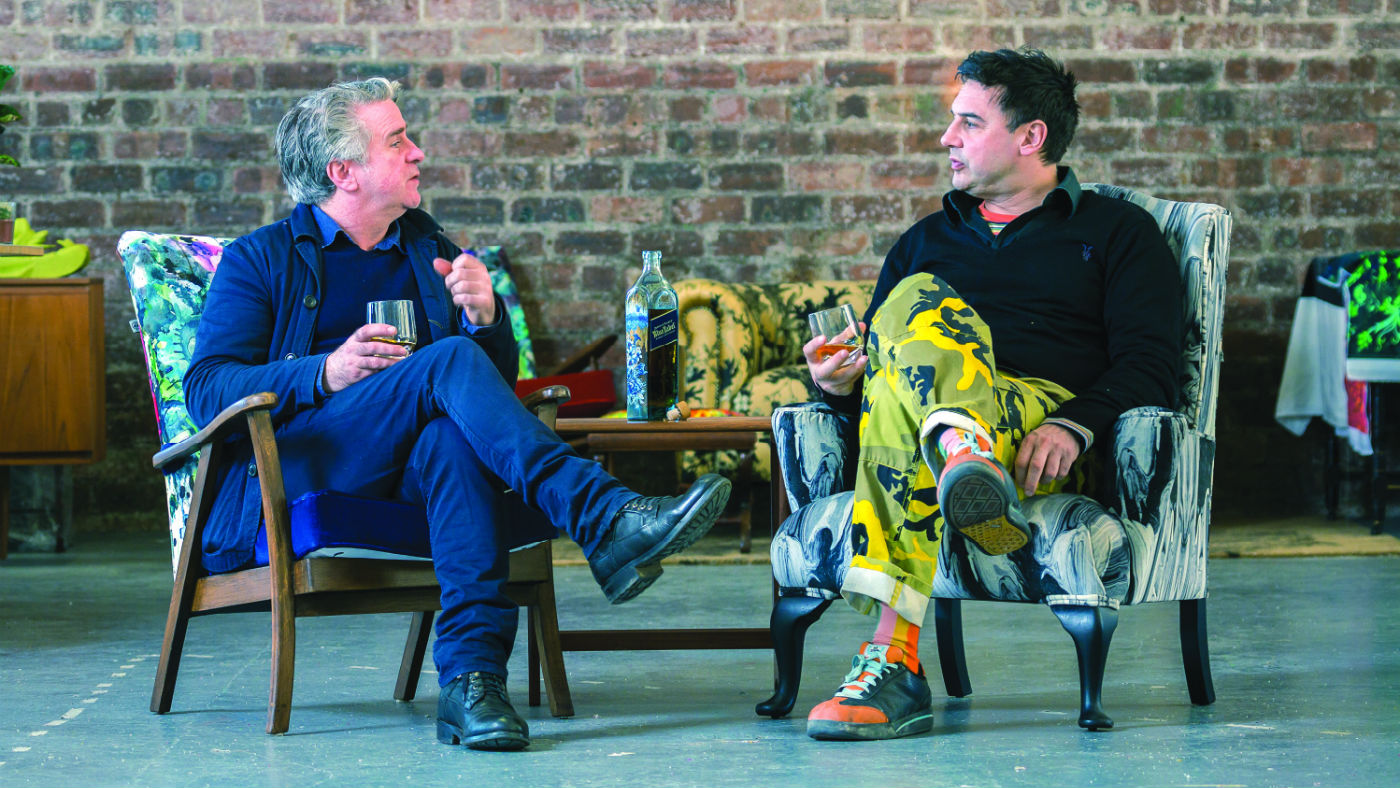Very busy indeed: a celebration of pattern
Timorous Beasties and other design experts on the impact of pattern and how to use it

Glasgow’s princes of print Timorous Beasties are celebrating the 30th anniversary of the brand, which has brought the world vibrantly patterned wallpaper and textiles that have been compared to William Morris on acid, or Damien Hirst on Ovaltine.
The duo behind Timorous Beasties, Alistair McAuley and Paul Simmons (pictured below), first met at the Glasgow School of Art and quickly discovered that they shared a love of printed pattern. “We realised quite early on that we wanted to produce our own fabrics,” says Simmons, “but to do anything your way, you have to do it yourself. Physically, it takes two people to print a fabric – one to push and one to pull the squeegee.”
In 1994, they made headlines with their best-known design, the Glasgow Toile, which looks like a traditional French toile de Jouy until closer inspection reveals scenes of Glaswegian debauchery. Their less edgy designs have been commissioned by the likes of Nike, and also feature in the St Pancras Eurostar business class lounge, on The Royal Conservatoire of Scotland’s theatre curtain, and at the refurbished Hyatt Andaz hotel in Liverpool Street, London.
The Week
Escape your echo chamber. Get the facts behind the news, plus analysis from multiple perspectives.

Sign up for The Week's Free Newsletters
From our morning news briefing to a weekly Good News Newsletter, get the best of The Week delivered directly to your inbox.
From our morning news briefing to a weekly Good News Newsletter, get the best of The Week delivered directly to your inbox.
The punks of print have retained their dour wit throughout their career. A question posed by we-heart.com back in 2014 - “what’s the most important thing to know about Timorous Beasties?” - received the deadpan answer: “That we’re not a veterinary practice.”
When we asked about their career highlights from the last three decades, Simmons said “not winning Designer of the Year 2005”. McAuley was in more reflective mood, however, replying: “Everything. I’m proud of it all. We have built a business that has great staff, a substantial website, a lovely studio, two showrooms – and we get to utilise the skills that we trained for.”

How to use pattern: experts give their advice

Clever clashing
A free daily email with the biggest news stories of the day – and the best features from TheWeek.com
Lucy Barlow, design director of Barlow & Barlow, says: “Growing up in the 1980s, pattern was huge – people used one print on six things in a room! In the 1990s and noughties, it all went beige and minimalist. Now I’m using pattern again, but it’s not Eighties-style – it’s ‘clever clashing’.
“Pattern’s in our DNA. As an English designer, I grew up in an old-fashioned house in the countryside and I love that layering of history, furniture and fabrics from all over the world. I’m not keen on minimalism, I like stuff!
“There’s always a grounding element from colours in a painting, or a rug, or wallpaper – and the scheme starts to build organically around that. The trick is to throw in some seemingly random colours to add an unexpected feel. Strong clashing colours I adore are green and pink, and purple and red – they look fantastic.
“If you’re experimenting with pattern, my tips are to be brave, and don’t try to finish a room in a week. People try to rush things and buy from one place, matching things to the last cushion. The house ends up looking like a showroom.
“If you exercise a bit of patience and collect things over time (and if you’re not working to a deadline like me) then as long as you love it, I’d call it a success.”

The upcycler
Lynn Watt of Ribbonreal makes beautiful and unique cushions from vintage Japanese kimono silk. “I felt it was my mission to preserve the art of the kimono even if it meant re-purposing the silk into something else to be loved and appreciated,” she says. “Up-cycling the silk into articles of desire has become a near addiction for me – I have never come across the same design twice.”
Unique vintage kimono cushions start from £40; etsy.com

Budapest select
Paris’s annual design show, Maison&Objet, this year featured work by 11 Hungarian designers – aka “Budapest Select”. Anna Regős was one of them. Her geometric patterned fabric, inspired by the work of Hungarian-born op-art painter Victor Vasarely, really caught our eye. Regős is also inspired by the environmental need to create long-lasting materials, made in her native Hungary. “I don’t keep up with trends, I just express my life and style,” she says. Her Lattice textile collection is pictured above.
-
 A running list of the US government figures Donald Trump has pardoned
A running list of the US government figures Donald Trump has pardonedin depth Clearing the slate for his favorite elected officials
-
 Ski town strikers fight rising cost of living
Ski town strikers fight rising cost of livingThe Explainer Telluride is the latest ski resort experiencing an instructor strike
-
 ‘Space is one of the few areas of bipartisan agreement in Washington’
‘Space is one of the few areas of bipartisan agreement in Washington’Instant Opinion Opinion, comment and editorials of the day
-
 The end of leasehold flats
The end of leasehold flatsThe Explainer Government reforms will give homeowners greater control under a move to the commonhold system
-
 Why baby boomers and retirees are ditching Florida for Appalachia
Why baby boomers and retirees are ditching Florida for AppalachiaThe Explainer The shift is causing a population spike in many rural Appalachian communities
-
 The pros and cons of new-builds
The pros and cons of new-buildsPros and Cons More options for first-time buyers and lower bills are offset by ‘new-build premium’ and the chance of delays
-
 How the Grenfell tragedy changed the UK
How the Grenfell tragedy changed the UKfeature Six years on since the government vowed to ‘learn lessons’ has sufficient progress been made?
-
 Pros and cons of building on the green belt
Pros and cons of building on the green beltPros and Cons More housing and lower house prices must be weighed against urban sprawl and conservation concerns
-
 The pros and cons of rent freezes
The pros and cons of rent freezesPros and Cons Proponents say rent controls provide stability for tenants, but critics claim they won’t fix the housing crisis
-
 Sport on TV guide: Christmas 2022 and New Year listings
Sport on TV guide: Christmas 2022 and New Year listingsSpeed Read Enjoy a feast of sporting action with football, darts, rugby union, racing, NFL and NBA
-
 House of the Dragon: what to expect from the Game of Thrones prequel
House of the Dragon: what to expect from the Game of Thrones prequelSpeed Read Ten-part series, set 200 years before GoT, will show the incestuous decline of Targaryen